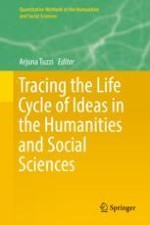2018 | OriginalPaper | Chapter
7. Treat Texts as Data but Remember They Are Made of Words: Compiling and Pre-processing Corpora
Author : Stefano Ondelli
Published in: Tracing the Life Cycle of Ideas in the Humanities and Social Sciences
Publisher: Springer International Publishing
Activate our intelligent search to find suitable subject content or patents.
Select sections of text to find matching patents with Artificial Intelligence. powered by
Select sections of text to find additional relevant content using AI-assisted search. powered by
